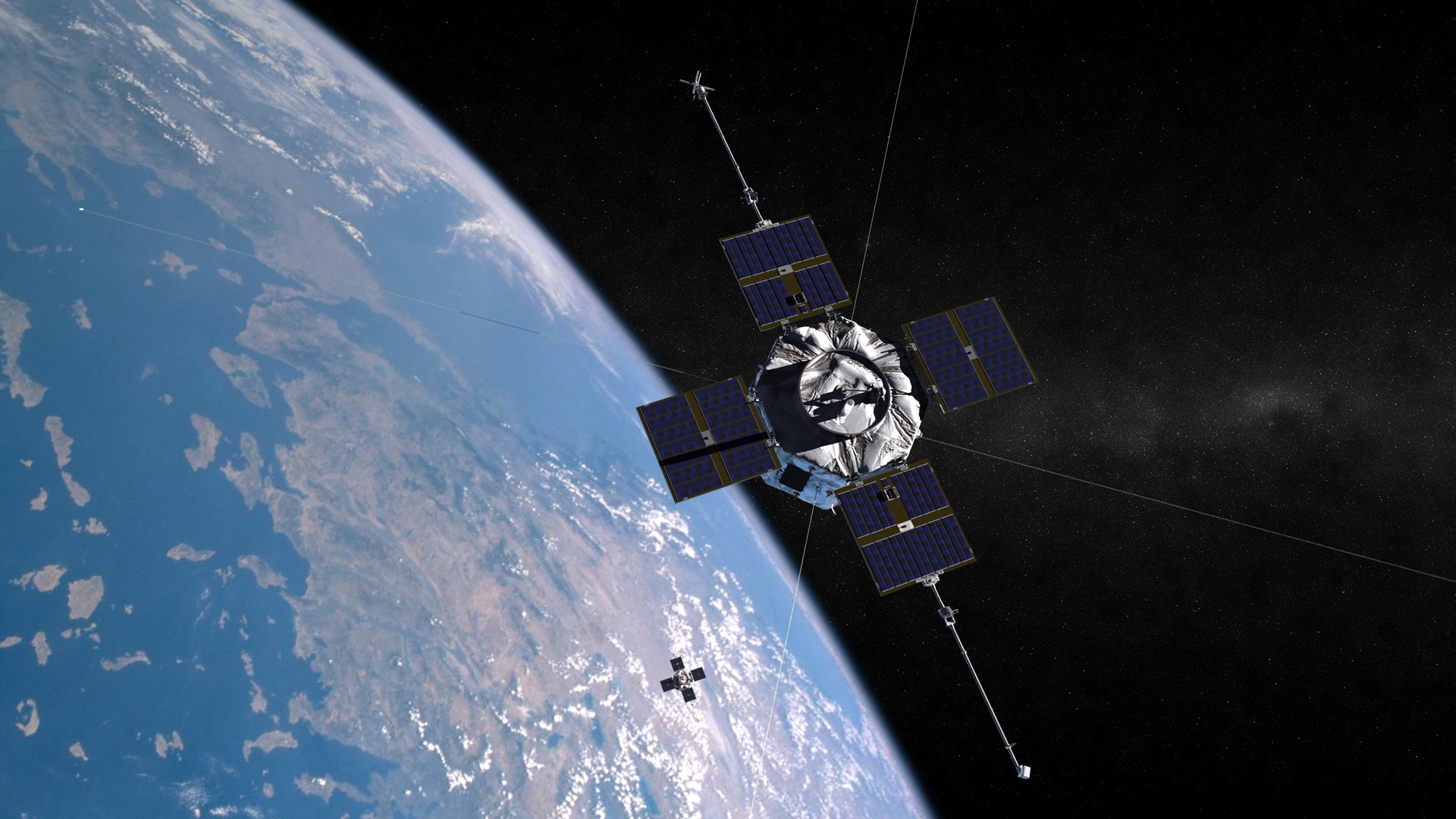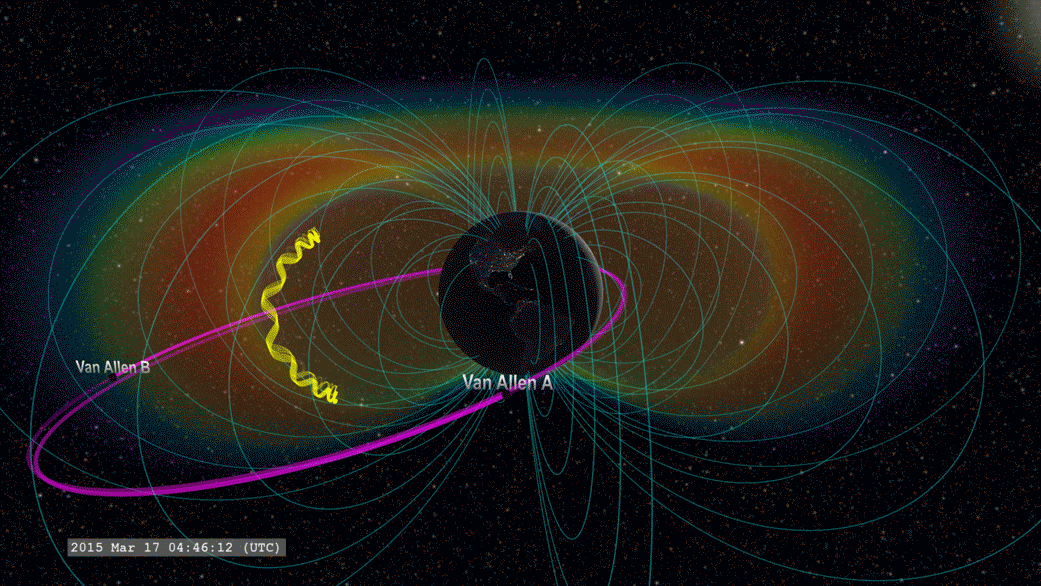Probes in Orbit Spot Radiation Belt Zap from the Sun

A probe swinging around Earth through the Van Allen radiation belts was able to pick out near-light-speed electrons following a powerful geomagnetic storm, providing a rare look into the interaction between the belts and the space weather event. A new NASA video explores the shocking phenomenon.
The probe witnessed the aftermath of what NASA called "the greatest geomagnetic storm of the preceding decade," when the sun expelled a burst of charged particles, called a coronal mass ejection, toward Earth in 2015. The interplanetary zap hit Earth's radiation belts right when a NASA probe was passing through, offering a rare glimpse of the event's impact.
The probe was one of two, called the Van Allen Probes, launched in 2012 to study the radiation belts that encircle Earth. The Van Allen belts are a layer of charged particles — electrons and protons — held in place by the Earth's magnetic field.

The spacecraft observed a pulse of electrons energized to near-light speed as the coronal mass ejection slammed into the Earth's magnetic field. The initial energy event lasted only a few minutes, but while both probes found an increased population of high-energy electrons in the belts days later, only one caught the initial effects of the solar storm.
Scientists study the radiation belts because radiation can damage spacecraft electronics, especially when the sun occasionally burps clouds of particles toward the Earth. If scientists can get a better handle on how the belts change and predict it, it will be easier for engineers to design spacecraft that can withstand that environment.
It's hard to see a geomagnetic storm's impact on Earth's radiation belts because when the storm energizes the electrons in the belts, those events are very local — to see it a spacecraft has to be in just the right place. That's why only one of the two Van Allen Probes picked up the storm's effect at first and sent back observations.
The researchers can use those measurements to get a better understanding of space weather phenomena in the region surrounding the Earth.
Get the Space.com Newsletter
Breaking space news, the latest updates on rocket launches, skywatching events and more!
A study of the data was published in the Journal of Geophysical Research on Aug. 15.
Follow us @Spacedotcom, Facebook and Google+. Original article on Space.com.
Join our Space Forums to keep talking space on the latest missions, night sky and more! And if you have a news tip, correction or comment, let us know at: community@space.com.

Jesse Emspak is a freelance journalist who has contributed to several publications, including Space.com, Scientific American, New Scientist, Smithsonian.com and Undark. He focuses on physics and cool technologies but has been known to write about the odder stories of human health and science as it relates to culture. Jesse has a Master of Arts from the University of California, Berkeley School of Journalism, and a Bachelor of Arts from the University of Rochester. Jesse spent years covering finance and cut his teeth at local newspapers, working local politics and police beats. Jesse likes to stay active and holds a fourth degree black belt in Karate, which just means he now knows how much he has to learn and the importance of good teaching.









